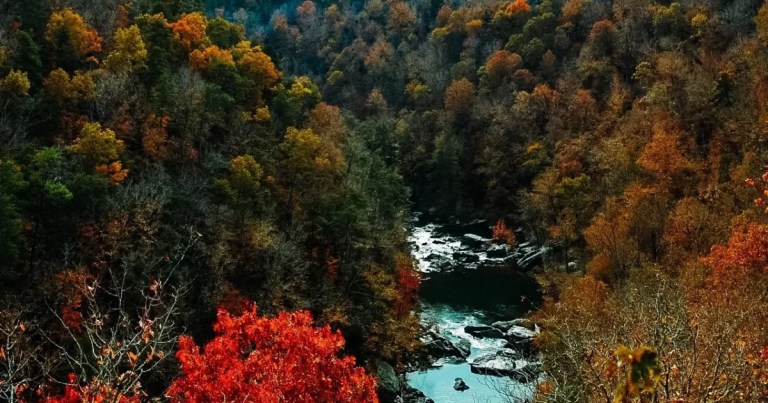9 of the spookiest spiders you’ll find creeping through Alabama right now—from a Samford professor
Reading time: 6 minutes

Move over ghosts and goblins—spiders in Alabama can be even spookier than imaginary creatures. We reached out to Dr. Drew Hataway, an arachnologist at Samford University, to find out about 9 of the spookiest spiders you can find in the Birmingham area this season. Keep reading for all the details.
But first, meet your trusty spider guide

A former colleague of mine who happens to be an arachnologist at Ole Miss was kind enough to introduce me to Drew Hataway.
He’s an assistant professor at the Howard College of Arts and Sciences at Samford University—this time of year, he’s in demand as everybody suddenly develops an interest in all things spooky, creepy and crawly.
Not only was he kind enough to share his extensive knowledge with us, but he broke the spiders down into four categories:
- Halloween faves
- Biggest
- Toxic
- Scariest looking
Halloween favorites
1. Araneus marmoreus, the marbled orb weaver

Also known as “the pumpkin spider.” Why? Its colorful abdomen, of course.
2. Gasteracantha cancriformis, orb weaver

This spiny crab-like spider builds orb webs in forest edges and suburban gardens. Look for a skull-like marking on the back of the abdomen—if you dare to get that close.
Here in ‘Bama, you’ll find black ones with white, yellow or orange markings.
The biggest creepy-crawly spiders in Alabama
3. Trichonephilia clavipes, the golden orb-weaver

A few fun facts about this giant spider:
- Its silk is yellow AND is stronger than steel by a factor of eight, according to Hataway.
- There’s such a large body-size disparity between females and males, there’s actually a technical term for it: sexual dimorphism:
- Females’ bodies, without legs, are around two inches.
- The guys, however, are only 5/16 of an inch—sorry, guys,
Increasing temps means a larger distribution of these spiders. If you’re in Shelby County, you should be able to find these regularly. Lucky you.
4. Dolomedes, the genus of fishing spiders

Dolomedes triton, pictured above, is named for the son of Poseidon, Greek god of the sea. Where you’ll find them: on the edges of lakes + ponds.
Not only can they walk on water to hunt, thanks to special hairs—they can also dive under water as deep as seven inches. Yikes!
5. Argiope aurantia, the common black and yellow garden spider

If you’ve ever seen a big web that looks like it has writing woven into a line going down the center, it was probably woven by a common black and yellow garden spider.
That thing I always thought looked like a ladder is technically called a stabilimentum, and apparently, according to spider experts, it looks like a zipper. I can see that.
Toxic spiders of Alabama
6. Latrodectus mactans, the Southern black widow

This is one of those spiders nobody really wants to see, but everybody remembers where they actually saw one last.
Apparently, in all of North America, there are five species of widow spiders, and guess what? Two of them live right here in Alabama. Aren’t we lucky?
The black widow isn’t very large, but she’s known for her black patent leather look and don’t forget her red hourglass markings.
Instead of an orderly web, black widows create a three-dimensional tangled cobweb…all the better to catch her prey with.
The adult females are the ones to watch out for—their venom packs a potent punch. But don’t worry, even though they bite about 2,000 people a year, deaths are actually quite rare.
Don’t you feel better now?
7. Latrodectus geometricus, the brown widow

Scientists think this one came from South Africa to Florida before making its way to ‘Bama.
A little smaller than the black widow, it’s tan with darker brown bands on its legs and often has the typical red hourglass.
It does have a neurotoxic venom, but according to Hataway, its effects are much less dangerous than the black widow.
Phew. I feel better now. You?
8. Loxosceles reclusa, the brown recluse spider

Brown recluses live throughout the southeastern US + in the midwest. Aren’t we special…
True to their name, they’re actually quite reclusive and apparently are well suited to living indoors with humans. Awesome.
In fact, people often mistake them for common cobweb and cellar spiders.
The good news, said Hataway, is that they’re not aggressive and if they do bite you, the first bite is painless. In fact, the majority of bites heal on their own.
That is, unless you’re one of the unlucky ones. If that’s the case, you can look forward to a necrotic lesion that kills tissue surrounding the bite and leads to a nasty scar. Google it if you don’t believe me. Or don’t. Your choice.
These spiders look super-scary
9. The Mygalomorph spiders

Tarantulas and trapdoor spiders fall into this group. Key characteristics: heavy-bodied + stout-legged. Also scary if you find one under your bed, like I did once.
But that’s another story, and wasn’t in Alabama, so not to worry.
Sphodros rufipes, the purseweb spider

If you were to run into one of these guys, “my what enormous chelicerae you have!” probably isn’t the first thing that would come out of your mouth. That is, unless you were an arachnologist.
For the rest of us, the chelicerae is the structure that connects the fang to the spider, and it projects straight forward. Creepy, right?
Anyway, this guy builds a tube from four inches below the ground to eight inches up the side of hardwood tree trunks. The spider camouflages the tube with bark and leaves and then waits.
When the unlucky prey happens upon the tube, the spider attacks from the inside out. The spider cuts a slit into the tube and then drags the prey inside. Ewwww.

 29365 views
29365 views

![Meet Diego, the new jaguar at the Birmingham Zoo [Photos] Meet Diego, the new jaguar at the Birmingham Zoo [Photos]](https://wp.fifu.app/bhamnow.com/aHR0cHM6Ly9iaGFtbm93LmNvbS93cC1jb250ZW50L3VwbG9hZHMvMjAyNS8xMC9kaWVnb3RoZWphZ3Vhci0xLTEtc2NhbGVkLmpwZw/f2a36edf429a/meet-diego-the-new-jaguar-at-the-birmingham-zoo-photos.webp?w=768&h=0&c=0&p=1549609)